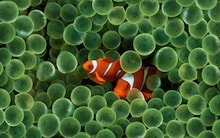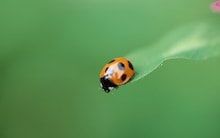Creating a Plugin
jCanvas provides a plugin API so you can create methods which integrate with jCanvas. To do so, use the jCanvas.extend() method.
The extend() method accepts one object containing three properties:
name: The name of the method you are creatingtype: Optional; the type of drawing, which jCanvas will recognize as a valid value for thetypeproperty.props: Optional; the custom properties your method uses (and their default values). These properties will be merged into the arguments object (mentioned below) for use in your method’s code.fn: The function providing the plugin’s functionality. It accepts two arguments:- The context of the canvas
- The parameters object the method will receive when called
$.jCanvas.extend({ name: 'pluginName', props: { prop: true }, fn: function (ctx, params) { // Your code here }});Example: drawHeart()
To demonstrate how this works, we’ll be creating a method that draws a heart on the canvas.
// Create a drawHeart() method$.jCanvas.extend({ name: "drawHeart", type: "heart", props: { size: 0, }, fn: function (ctx, params) { const canvas = this, width = params.size, factor = 0.75, height = width * factor, angle = PI * (factor * (1 - factor));
// Enable shape transformation $.jCanvas.transformShape(canvas, ctx, params, width, height);
const x = params.x; const y = params.y + width / 8;
ctx.beginPath(); ctx.moveTo(x, y + height / 2); ctx.arc(x + width / 4, y - height / 2, width / 4, angle, PI, true); ctx.arc(x - width / 4, y - height / 2, width / 4, 0, PI - angle, true); params.closed = true; $.jCanvas.detectEvents(canvas, ctx, params); $.jCanvas.closePath(canvas, ctx, params); },});
// Use the drawHeart() method$('canvas').drawHeart({ layer: true, draggable: true, fillStyle: '#f6c', x: 160, y: 100, size: 140, rotate: 30});TypeScript
If you use TypeScript, the $.jCanvas.extend method is generic and accepts a
single type argument representing the types of any new props you define.
// Create a drawCrescent() method$.jCanvas.extend<{ eclipse: number; }>({ name: 'drawCrescent', type: 'crescent', props: { eclipse: 0.5 }, fn: function (ctx, params) { console.log(params.eclipse); // eclipse: number // ... }});Creating a definitions file (d.ts)
To extend the native jCanvas types to support your new methods/properties, create a d.ts file with the same base name as your plugin file (e.g. if your plugin filename is jcanvas-crescent.ts, then the definitions file should be jcanvas-crescent.d.ts):
The definitions file should look something like this:
/// <reference path="./node_modules/jcanvas/dist/esm/jcanvas.min.d.ts" />// You might need to adjust the above path
interface JCanvasDefaults { eclipse: number;}
interface JQuery { drawCrescent(args: Partial<JCanvasObject>): JQuery;}API Methods
The jCanvas object ($.jCanvas) provides a few useful methods for integrating your methods with jCanvas. All of these methods accept the same three arguments: the canvas DOM element (this), the canvas context (ctx), and the parameters object (params).
setGlobalProps(): sets global canvas properties likefillStyle,shadowColor, etc.transformShape(): Enables shape transformation using the standard transformation properties (rotate,scale,translate). Note that theclosePath()method must be called later on to restore the layer transformations.detectEvents(): Enables and detects jCanvas events for your custom path. Note that this method should be called at the end of your path.closePath(): Closes the current path, and fills/strokes it if the respective properties have been set. The method also enables masking for the path through the use of themaskproperty.setCanvasFont(): Sets the font of the canvas context based on thefontStyle,fontSize, andfontFamilyproperties.measureText(): Augments the given parameter object with the calculatedwidthandheightof the text. Accepts an array of strings (representing lines of text) as a fourth argument.
$.jCanvas.detectEvents(this, ctx, params);$.jCanvas.closePath(this, ctx, params);Notes
When calling your method, jCanvas will automatically loop through selected canvas elements, so you don’t need to.


